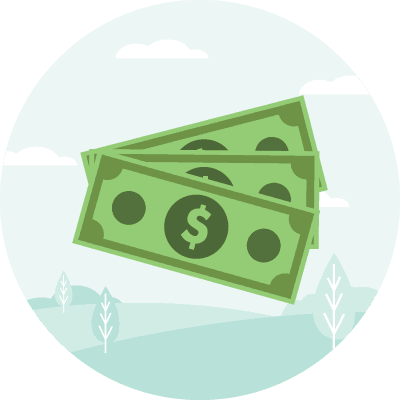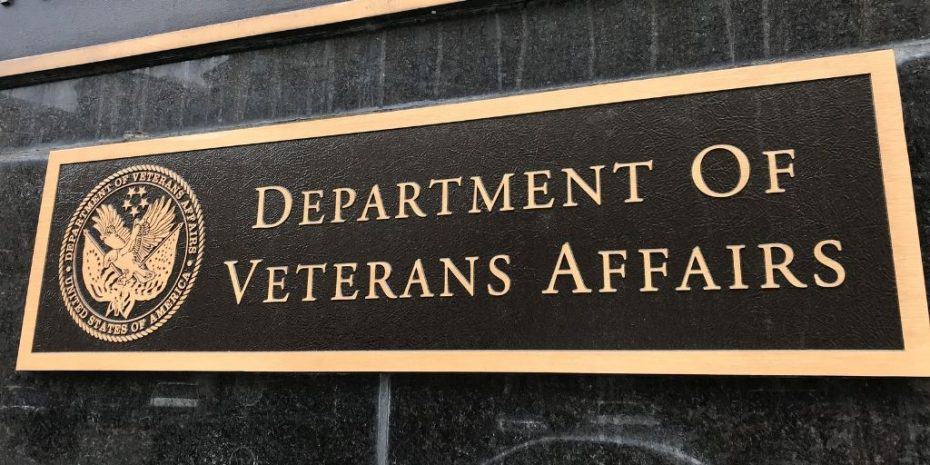VA Loan Definition
REtipster does not provide tax, investment, or financial advice. Always seek the help of a licensed financial professional before taking action.
What is a VA Loan?
While it is called a “VA loan,” the VA itself does not finance the loan. It only sets the qualifying standards, dictates the terms of the mortgages, and guarantees a portion of the loan (or at least most of them). Instead, private lenders like banks and mortgage companies offer VA home loans. If the borrower defaults on the loan in this case, the lender can recover part of the loss under the VA guarantee.
Sometimes, the VA also makes direct loans, specifically as part of the Native American Direct Loan program. Under the NADL, the VA issues and services the mortgage, typically with better terms than those available from private lenders.
There are four VA loan programs:
- VA purchase loan. This loan can be used to build, buy, or improve an existing home. It applies to a single-family home, a multi-family property of up to four units, a condominium, or a manufactured home and lot. This type can also go toward adding energy-efficient upgrades to a home.
- Native American Direct Loan: This loan is only available to Native American veterans or veterans with a Native American spouse. This is a direct VA loan for building, purchasing, or improving a home. It can also be used to refinance an existing VA loan.
- Interest rate reduction refinance loan (IRRRL): This is a streamline refinance that applies only to existing VA loans. It is a no-down payment loan available for amounts up to the Fannie Mae conforming loan limit. Most of the time this refinance doesn’t require income or credit verification to close, and is an extremely fast way to reduce your monthly payment!
- Cash-out refinance loan: This loan can refinance an existing VA or non-VA loan and cash out all or a portion of the existing equity. It is also subject to Fannie Mae/Freddie Mac conforming loan limits.
VA Loan Eligibility
Eligibility depends on the borrower’s duty status, length of time served, and discharge service. Generally speaking, a VA borrower must either be in active duty or honorably discharged after at least 90 days of consecutive war-time service or 181 days of peace-time service, or six years of National Guard or Reserve status. The spouse of a service member who died in the line of duty is also eligible for a VA loan.
The VA does not set a credit score benchmark for a VA-backed loan. However, most lenders look for a minimum score of 620 to qualify for a VA loan[2].
Borrowers must first obtain a VA Certificate of Eligibility (COE) before beginning the loan application process with a lender. They can complete this application via mail or online at the VA website. Some lenders use the Web LGY system, which helps borrowers obtain the COE as part of the loan application process.
Features of a VA Loan
For borrowers who qualify, a VA loan is one of the most advantageous mortgage programs available. Here are the key advantages of a VA loan:
- No down payment options. The VA offers one of the only no-down payment loan programs currently available. Data from the VA cites that about 90% of loans[3] are made without a down payment each year.
- No private mortgage insurance (PMI) required. Because the VA guarantees loans, borrowers are not subject to PMI premiums, which can cost between 0.5% and 2% of the loan amount.
- No loan limits for certain loan programs. Under the VA purchase loan program, borrowers can borrow as much as their lender approves. However, the VA only guarantees a maximum of 25% of the loan amount subject to annual limits. Currently, the maximum VA loan guarantee is $121,000, for a total loan amount of roughly $484,000. As of January 1st, 2020 the VA loan does not have a limit for first-time use, but subsequent-uses will resort to the old VA loan guarantee amount, which varies by your zip code.
- No minimum credit requirement. The VA does not impose a minimum credit score to qualify for a loan, although lenders typically have their own underwriting standards. Bankruptcy and foreclosure also will not disqualify borrowers from obtaining a VA loan as long as two years have passed since discharge.
- No prepayment penalty. Unlike some mortgages, there is no penalty for paying off a VA loan early.
- Reusable benefit. A VA loan guarantee is not just for first-time homebuyers. It can be used multiple times as long as the previous loan is paid off first. You can use the VA loan more than once, but the specifics of how you do this will vary based on the purchase price(s) and your personal situation.
- Foreclosure mitigation program. Struggling borrowers can contact the VA for assistance. Loan agents negotiate with lenders on the borrower’s behalf to resolve delinquencies and avoid foreclosure.
Disadvantages of a VA Loan
VA loans are not always right for every borrower. There are certain drawbacks to the VA loan program:
- Additional funding fees. There is a funding fee of between 1.4% and 3.6% of the total loan amount with VA loans, which can be rolled into the mortgage. This fee is in addition to any origination fees charged by the lender.
- Exclusive to a primary residence. A VA loan can only be used to build or purchase a primary residence. Borrowers cannot use VA-backed funds for vacation or investment property. However, the loan can be used to purchase a multi-unit property as long as the borrower intends to live in one unit as their primary residence.
- Not all property types qualify for VA-backed funding. Co-ops are not eligible for VA loans, and the funds cannot be used to buy vacant land unless the borrower is planning to immediately build a residence on it or place a manufactured home on it.
- VA loans are for new construction or “move-in ready” homes. They cannot be used for a fixer-upper or a distressed property the borrower plans to live in during a fix-and-flip. VA loans also cannot be used for combination business/residence properties, such as a working farm or other business property with attached living quarters. A caveat to this is that there is now a VA renovation loan that operates much like the FHA 203k loan, and can be used to purchase a fixer-upper property with as little as zero down.
Also, zero-down loans can be risky in themselves. If the housing market declines, borrowers can end up owing more than the house is worth. This makes it difficult to pay off the mortgage and renew eligibility for another VA loan.
VA Purchase Loan Funding Fees
| Down Payment Amount | Funding Fee | |
| First-Time VA COE is Used | Less than 5% | 2.3% |
| 5% to 9.99% | 1.65% | |
| 10% or more | 1.4% | |
| Down Payment Amount | Funding Fee | |
| Subsequent Uses of COE | Less than 5% | 3.6% |
| 5% to 9.99% | 1.65% | |
| 10% or more | 1.4% |
Buying a Home With a VA Loan
The process for buying a home with a VA loan is similar to the homebuying process with a conventional mortgage, except the borrower must obtain a Certificate of Eligibility (COE).
- Apply for and obtain a COE from the VA.
- Compare and choose lenders. Many lenders charge a flat loan origination fee for VA loans, so borrowers should compare and negotiate where possible. This fee is in addition to the mandatory funding fee charged by the VA.
- Select a home and sign a purchase agreement. Borrowers should make sure the sales contract includes a VA escape clause in case the property does not appraise at sales price or fails mandatory inspections.
- Get an appraisal with a VA-approved appraiser. Arrange any inspections required by the lender.
- Submit documents required by the lender’s underwriting department and close on the loan.
Assuming a VA Loan
In the past, all VA loans were unrestricted and assumable, meaning anyone could take over a VA loan regardless of VA eligibility and credit status. The buyer simply took overpayments and the veteran was only responsible for any losses the VA incurred if the buyer defaults. These loans have essentially disappeared, since unrestricted assumption only applies to VA loans that closed prior to March 1, 1988.
Newer VA loans can only be assumed with the lender’s approval. In most cases, the buyer must also have VA eligibility to assume a VA loan. In cases where a non-VA eligible buyer is allowed to assume the VA loan, the selling veteran loses their VA eligibility until the loan is paid off.
Even if the buyer meets the credit and VA eligibility requirements, lenders are not required to approve a VA loan assumption, however.
VA Foreclosure Investing Basics
The VA frequently acquires properties through foreclosure on VA-backed mortgages. These properties are marketed through a third-party management contract (currently Vendor Resource Management). Local real estate agents list the properties on the MLS; a master list of VA foreclosures is also available on the Vendor Resource Management website.
- Eligibility. Anyone can purchase a VA foreclosure regardless of veteran status and VA eligibility. Investors must work with a VA-approved real estate agent and use government-approved forms.
- Time on the market. Data suggests[4] that VA foreclosures are on the market an average of just 22 days. During the first 30 days, the VA tends not to negotiate on price. In fact, the sales price for the average VA foreclosure is the actual asking price. However, if the property is unsold after 30 days, the VA typically makes a fairly aggressive price drop. They do so every 30 days until the property is sold.
- Closing costs. The VA does not pay closing costs unless the amount is rolled into the sales price. In other words, if a buyer wants $5,000 in closing cost help, the offer should be the asking price plus $5,000. The VA also limits closing cost help to 2% of the purchase price.
- Making an offer. Potential buyers must use the VA’s sales contract to submit an offer. There is no option fee, but the contract stipulates a built-in 7-day option period from the date of execution. There is a second 5-day option period after the home inspection. The VA will not pay for repairs discovered by the inspection—properties are sold as-is—but it may allow buyers to renegotiate the sales price if the inspection uncovers significant issues.
- Financing: Financing is available to non-veterans and investors through the VA Vendee Loan Program. Under the Lendee program, financing is available with zero down payment to owner-occupants and with 5% down for investors. There are 15- and 30-year terms available.
There are loan origination fees and a 2.25% VA funding fee associated with Vendee loans, but these can be rolled into the mortgage. Approval is not credit score-driven but instead rests on the VA’s evaluation of the borrower’s ability to make monthly payments. The VA prioritizes debt-to-income ratio and cash flow in approval decisions, but they also look at credit score and credit history.
There is no prepayment penalty on a Vendee loan; borrowers can refinance at any time after the loan closes. However, there is no refinancing product in the Vendee loan program, so investors who want to refinance need to find a private lender.
Takeaways
VA loans are available to qualifying service members to build or buy a home. Although they are not meant for investment properties, borrowers can use a VA loan to purchase a multi-family property with up to four units, provided they live in one as the primary residence for at least a year.
Anyone can buy a VA foreclosure. Even non-veterans may qualify for VA financing on foreclosed properties through the VA Vendee Loan Program. Approval for these loans is not based solely on credit score, but on other factors that demonstrate the borrower’s ability to make monthly payments.
Reviewed by David Pere of frommilitarytomillionaire.com
Sources
- U.S. Census Bureau. (2019.) Table Q1. New Houses Sold by Sales Price: United States. Retrieved from https://www.census.gov/construction/nrs/pdf/quarterly_sales.pdf
- VA.org. (2020.) How To Get A VA Loan If You Have Bad Credit. Retrieved from https://va.org/how-to-get-a-va-loan-if-you-have-bad-credit/
- U.S. Department of Veterans Affairs. (n.d.) VA-backed Veterans home loans. Retrieved from https://www.va.gov/housing-assistance/home-loans/
- Hall, B. (2017.) What Is the VA Foreclosures List? The SitRep. Retrieved from https://military.id.me/vet-pack/va-foreclosures-list/




